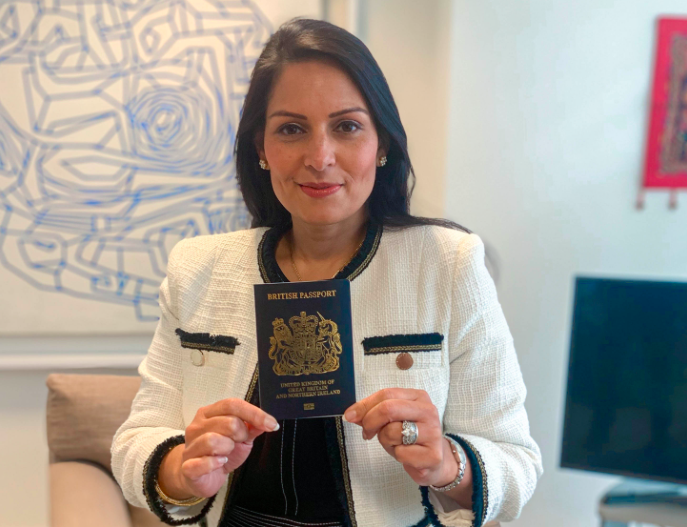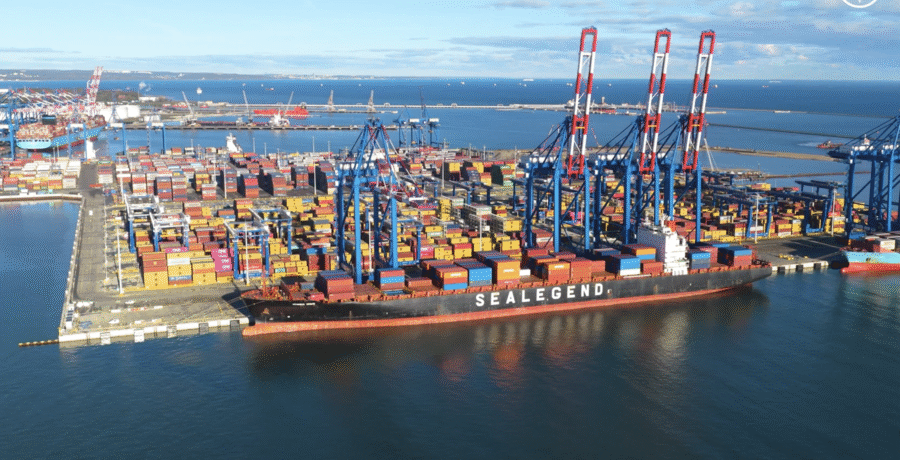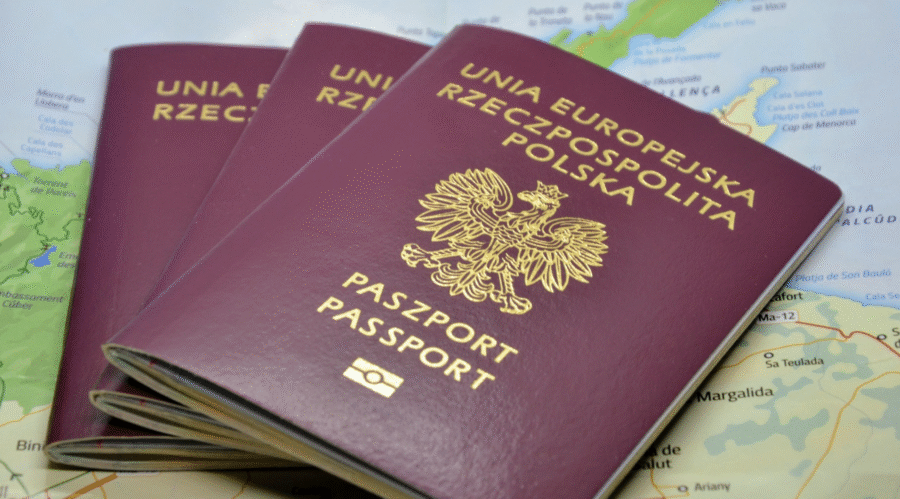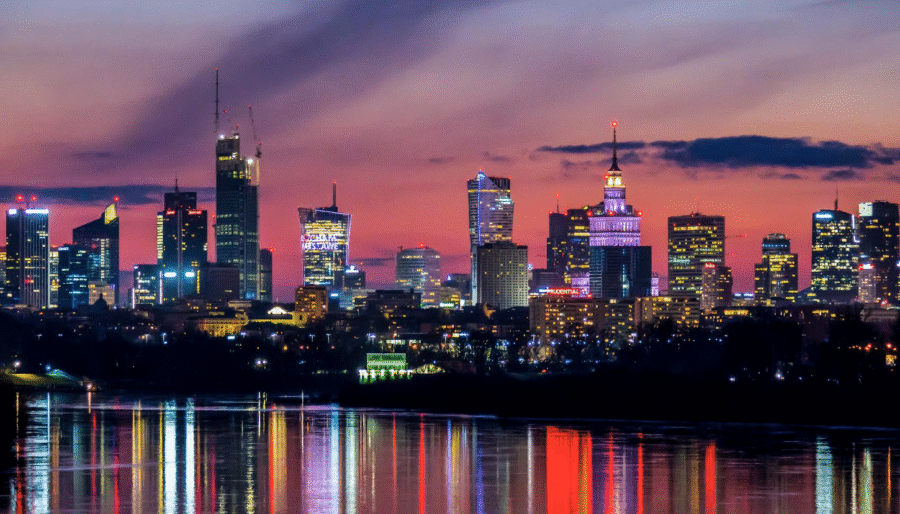Home Office informed on Friday February 21st, that the UK post-Brexit blue passports will be made in Polish factory in Tczew. They will be given to applicants from March 2020. The blue colour will be exactly the same as the old-style British passports. Blue passports were first used in 1921, and remained the colour until the UK joined the EU (then the European Economic Community) when changed to burgundy.
The £260 million contract for 11 years was won by a subsidiary of the French multinational group Thales last year, after its British competitor De la Rue lost out – posts The Times. Social media criticises the fact that around 170 skilled printing jobs from the firm De La Rue (which previously printed UK passports) will be lost in the UK due to the decision.
https://twitter.com/thetimes/status/1231123290527322113
According to gov.uk Britons will be able to travel with a blue passport when the traditional colour returns for the first time in almost 30 years.
The distinctive blue cover will be re-introduced now the UK has left the EU, and will replace burgundy passports which were gradually rolled out from 1988.
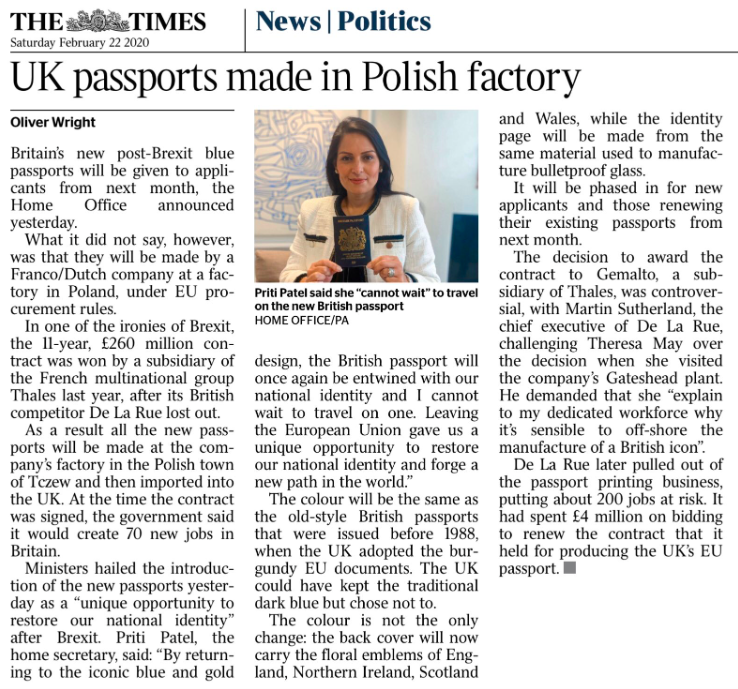
The first new passports will be issued and delivered early next month. Full introduction will be phased in and from mid-2020 all new passports will be blue.
The colour is not the only change, in a first for the British passport, the back cover will also carry its own symbolic design – the floral emblems of England, Northern Ireland, Scotland, and Wales embossed.
The blue passport will also be the greenest British passport ever. The carbon footprint produced through manufacture will be reduced to net zero, through projects such as planting trees.
Home Secretary Priti Patel said: „Leaving the European Union gave us a unique opportunity to restore our national identity and forge a new path in the world. By returning to the iconic blue and gold design, the British passport will once again be entwined with our national identity and I cannot wait to travel on one.”

The new passport will also be the most technologically advanced British passport ever, with a raft of new and updated security features, including a hard-wearing, super-strength polycarbonate data page, which contains innovative technologies embedded into the document, to keep personal data secure.
It also includes the latest and most secure printing and design techniques, which means it offers better protection against identity theft and fraud and will be even harder to forge.
The blue cover is a return to the original appearance of the British passport, with the colour first used in 1921.
It remained the colour of choice until the UK joined the EU when a change to burgundy was agreed and adopted.
All British passports will continue to be personalised with the holder’s personal details and photograph in the United Kingdom, ensuring no personal data leaves the country.
Standard passports will continue to contain 34 pages. Frequent traveller ‘Jumbo’ passports will now contain 54 pages.
Those with valid, burgundy passports can continue to use their passport for travel until it expires.


